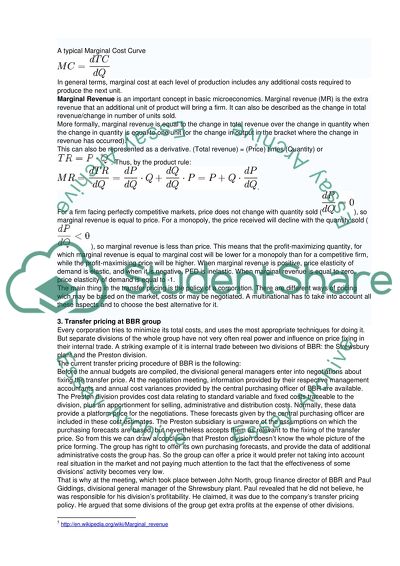Cite this document
(“The Impact of Transfer Pricing on Decision Making and Control: The Essay”, n.d.)
The Impact of Transfer Pricing on Decision Making and Control: The Essay. Retrieved from https://studentshare.org/miscellaneous/1538355-the-impact-of-transfer-pricing-on-decision-making-and-control-the-resolution-of-a-divisional-conflict
The Impact of Transfer Pricing on Decision Making and Control: The Essay. Retrieved from https://studentshare.org/miscellaneous/1538355-the-impact-of-transfer-pricing-on-decision-making-and-control-the-resolution-of-a-divisional-conflict
(The Impact of Transfer Pricing on Decision Making and Control: The Essay)
The Impact of Transfer Pricing on Decision Making and Control: The Essay. https://studentshare.org/miscellaneous/1538355-the-impact-of-transfer-pricing-on-decision-making-and-control-the-resolution-of-a-divisional-conflict.
The Impact of Transfer Pricing on Decision Making and Control: The Essay. https://studentshare.org/miscellaneous/1538355-the-impact-of-transfer-pricing-on-decision-making-and-control-the-resolution-of-a-divisional-conflict.
“The Impact of Transfer Pricing on Decision Making and Control: The Essay”, n.d. https://studentshare.org/miscellaneous/1538355-the-impact-of-transfer-pricing-on-decision-making-and-control-the-resolution-of-a-divisional-conflict.


